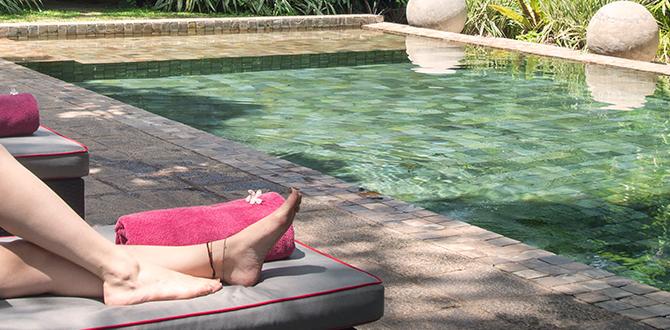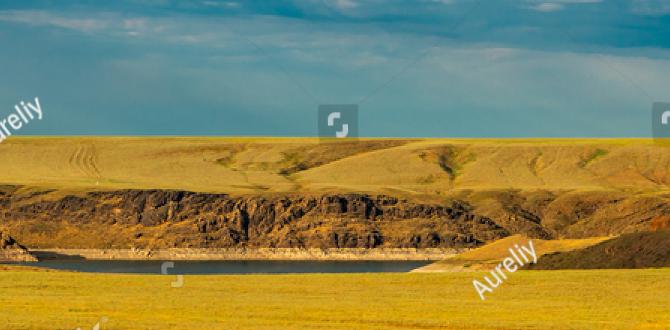Embark on your Belize road trip with confidence by mastering essential planning. This guide reveals how to choose the perfect base, organize logistics, and pack smartly for a stress-free Central American adventure.
Planning a road trip through Belize can feel a bit daunting, but it doesn’t have to be! Imagine driving through lush jungles, discovering ancient ruins, and cooling off in turquoise Caribbean waters. The freedom of a road trip allows you to explore this beautiful country at your own pace. However, knowing where to start with planning can be the biggest hurdle. This guide is here to help you break it down into simple steps, making your Belizean adventure smooth and enjoyable from start to finish.
Your Belize Road Trip Base Guide: Essential Planning
Belize, a gem nestled between Mexico and Guatemala, offers a tantalizing blend of Mayan history, vibrant cultures, and stunning natural beauty. From the Caribbean coast dotted with islands to the dense rainforests home to jaguars, it’s a destination begging to be explored by car. But how do you best experience it all? The key lies in smart planning, especially when it comes to setting up your “base.”
A well-chosen base camp can be your launchpad for daily explorations, offering comfort and convenience after a day of adventure. It’s about more than just a place to sleep; it’s your personal hub for experiencing Belize. Let’s dive into how to make your Belize road trip planning less stressful and more exciting.
Step 1: Define Your Travel Style and Priorities
Before you even think about booking anything, take a moment to consider what you want out of this trip. Are you an adrenaline junkie seeking adventure activities like ziplining and cave tubing? Are you a history buff eager to explore Mayan ruins? Or perhaps a beach lover dreaming of snorkeling and sailing the cayes? Your priorities will heavily influence where you should base yourself and what kind of road trip you’ll have.
Consider these questions:
- Pace: Do you prefer a fast-paced trip hitting many spots, or a slower journey immersing yourself in a few locations?
- Interests: What are your must-do activities? Mayan ruins, jungle adventures, wildlife spotting, diving, relaxing on the beach, cultural experiences?
- Budget: Are you looking for budget-friendly hostels, comfortable mid-range hotels, or luxury eco-lodges?
- Companions: Are you traveling solo, as a couple, with family (including children), or with elderly companions who might need specific accommodations or easier access?
For families, comfort and accessibility become paramount. Think about stroller-friendliness, kid-friendly activities nearby, and the availability of amenities like pools or play areas. For those managing personal care needs, consider accommodations that offer privacy and ease of access, ensuring a stress-free experience. For instance, having easy access to restrooms and comfortable spaces is key for everyone’s well-being on a long road trip.
Step 2: Understand Belize’s Geography and Road Conditions
Belize is a small country, but its diverse landscapes mean different regions offer unique experiences. Understanding this geography is crucial for planning your route and base locations.
The main highways are generally paved and in decent condition, especially the George Price Highway (formerly the Western Highway) and the Philip Goldson Highway (formerly the Northern Highway). However, venturing off the main roads, especially into more remote jungle or coastal areas, can mean unpaved, bumpy, or sometimes muddy tracks. This is where a 4WD vehicle can be a definite advantage, though many areas are accessible with a standard car.
Belize can be broadly divided into several key regions, each offering distinct attractions and ideal for different types of bases:
- Northern Belize: Home to major Mayan sites like Lamanai and Caracol (though Caracol is more central-west). It’s flatter, drier, and closer to the Mexican border.
- Central Belize (including the coast and barrier reef): This is where you’ll find Belize City (the main port and transport hub), the capital city Belmopan, and the start of the stunning Caribbean coast. It’s a gateway to the cayes.
- Western Belize (Cayo District): The “adventure capital” with lush rainforests, rivers, and numerous significant Mayan ruins like Xunantunich and Cahal Pech. This is a prime area for jungle lodges and outdoor activities.
- Southern Belize (Toledo and Stann Creek Districts): Offers a more rugged, less-developed feel with dense rainforests, waterfalls, and a rich Garifuna culture, especially around towns like Placencia and Hopkins.
When researching road conditions, check resources like the official Belize Tourism Board for general information. For real-time conditions, local advice is invaluable, so connect with fellow travelers in online forums.
Step 3: Choosing Your Ideal Base Location(s)
Based on your travel style and an understanding of Belize’s regions, you can start pinpointing potential base locations. Many visitors opt for one or two main bases to minimize packing and unpacking, while others prefer to move around more frequently.
Option A: Based in the Jungle/West (Cayo District)
Why: If ruins, caves, rivers, and lush rainforests are your main draw, the Cayo District is your place. San Ignacio is the bustling hub, offering a range of accommodations, restaurants, and tour operators.
Pros:
- Proximity to major archaeological sites (Xunantunich, Cahal Pech, El Caracol).
- Access to adventure activities like ziplining, ATV tours, horseback riding, and cave exploration (ATM Cave is a must-do!).
- Beautiful natural scenery and wildlife spotting opportunities.
- Good range of lodging options from budget guesthouses to luxury eco-lodges.
Cons:
- Further from the coast and the barrier reef.
- Requires more driving to reach northern or southern attractions.
Perfect for: Adventure seekers, history buffs, nature lovers.
Option B: Based on the Coast/Central or South (Placencia, Hopkins, Ambergris Caye, Caye Caulker)
Why: For those who dream of diving, snorkeling, relaxing on the beach, and experiencing island life or laid-back coastal towns.
Pros:
- Direct access to the Belize Barrier Reef, a UNESCO World Heritage Site, for world-class diving and snorkeling.
- Beautiful beaches and crystal-clear waters.
- Relaxed atmosphere.
- Distinct cultural experiences (e.g., Garifuna culture in Hopkins).
Cons:
- Driving on the mainland is necessary to reach these coastal areas.
- Island bases (Ambergris Caye, Caye Caulker) require leaving your car in Belize City or San Pedro and taking a water taxi, which adds logistical complexity and cost.
- May be weather-dependent if you plan extensive water activities.
Perfect for: Beach lovers, divers, snorkelers, those seeking relaxation.
Option C: A Mix of Both
Why: This is often the best approach for a comprehensive Belize experience. Spend time inland exploring the jungle and ruins, then head to the coast for reef adventures.
Sample Itinerary (10-14 Days):
- Days 1-5: Base yourself in San Ignacio (Cayo District). Explore Xunantunich, ATM cave, and local waterfalls.
- Days 6-10: Drive to a coastal town like Placencia or Hopkins. Enjoy beach time, snorkeling trips, and experience local culture.
- Days 11-14: Depending on your departure point, either drive back towards the airport, or if flying out from San Pedro, drive to Belize City, park your car, and take a water taxi to Ambergris Caye for a few final days of island life.
Considerations for Specific Needs:
If you are traveling with young children or require specific personal care items like adult or child diapers for extended journeys or specific activities, choosing a base in a larger town like San Ignacio or Belize City might offer better access to pharmacies or shops. When booking accommodations, always check for amenities that will enhance your comfort and convenience.
Step 4: Vehicle Rental and Logistics
Your rental car is your ticket to freedom in Belize. Choosing the right vehicle and understanding rental policies are crucial.
What Kind of Vehicle?
- Standard Car: Suitable for most main highways (George Price, Philip Goldson). Affordable and fuel-efficient.
- SUV/4×4: Recommended if you plan to explore unpaved roads, venture into more remote jungle areas, or travel during the rainy season (May-November) when some roads can become challenging.
Rental Companies and Tips:
Major international rental companies might be available at the airport, but local Belizean companies often offer more competitive rates and flexibility. Always book in advance, especially during peak season.
- Read the contract carefully: Understand insurance coverage, mileage limits, and any geographical restrictions.
- Inspect the vehicle thoroughly: Check for existing damage, ensure all lights and systems work, and document everything with photos/videos before driving off.
- Check for a spare tire and tools: A flat tire can happen, so be prepared.
- Fuel: Gas stations are available in towns and along major highways, but plan your fuel stops, especially for longer stretches between settlements.
Important Note on Islands: You cannot drive rental cars to the cayes. You will need to park your car at a secure lot in Belize City or another mainland point and take a water taxi.
Step 5: Accommodation Booking Strategy
Once you’ve chosen your base location(s), it’s time to book your stays. The type of accommodation you choose can significantly impact your comfort and budget.
Types of Accommodations:
- Hotels/Resorts: Offer standard amenities, room service, and often on-site restaurants and pools.
- Eco-Lodges: Ideal for jungle locations, offering a closer connection to nature, often with sustainable practices.
- Guesthouses/Boutique Hotels: Provide a more personal touch and local experience.
- Vacation Rentals (Airbnb/VRBO): Great for families or longer stays, offering kitchens and living spaces.
- Hostels: Budget-friendly option, good for solo travelers looking to meet people.
Booking Tips:
- Book in Advance: Especially for popular areas or during peak seasons (December-April, July-August).
- Consider Location: Is it walking distance to restaurants, attractions, or does it require driving?
- Read Reviews: Pay attention to comments on cleanliness, staff friendliness, Wi-Fi reliability, and noise levels.
- Check for Family-Friendly Options: If traveling with children, look for amenities like pools, connecting rooms, or kids’ menus.
- Plan for Extended Stays or Specific Needs: If you require extra privacy or need space for managing personal care items, a vacation rental might be more suitable than a standard hotel room. Look for descriptions that emphasize comfort, accessibility, and space.
Step 6: Packing Essentials for Your Belize Road Trip
Packing smart means packing light but packing right. Consider the climate, your planned activities, and essential comfort items.
Clothing:
- Lightweight, breathable clothing (cotton, linen).
- Swimwear.
- Rain jacket or poncho (even in the dry season, tropical showers can occur).
- Comfortable walking shoes or sturdy sandals.
- Water shoes for activities near rivers or rocky shores.
- A light sweater or jacket for cooler evenings or higher altitudes.
- Sun hats and sunglasses.
Health and Personal Care:
This is crucial for comfort and peace of mind on any trip, especially an extended road trip. Beyond your usual toiletries, consider these:
- Insect repellent: Essential for jungle and evening wear.
- Sunscreen: High SPF is a must.
- First-aid kit: Include bandages, antiseptic wipes, pain relievers, and any personal medications.
- Hand sanitizer.
- Personal hygiene items: For those who use adult diapers or child diapers, pack a sufficient supply based on your needs, as availability and brands might differ significantly from what you’re accustomed to. Traveling with discrete, comfortable, and reliable adult diapers or child diapers can massively reduce stress, allowing you to focus on the adventure. Consider options designed for long-wear and high absorbency for maximum comfort during drives or excursions.
- Motion sickness medication: If you are prone to car sickness.
Documents and Money:
- Passport and visa (if required).
- Driver’s license and copies of your rental agreement.
- Travel insurance information.
- Credit/debit cards and some cash (USD is widely accepted, along with the Belize Dollar, which is pegged 2:1).
- Copies of important documents stored separately or digitally.
Gear:
- Reusable water bottle.
- Camera and extra batteries/power bank.
- Small backpack for day trips.
- Binoculars for wildlife spotting.
- Waterproof bag or case for electronics (especially for boat trips or rainy days).
Step 7: Safety and Communication
Belize is generally a safe destination for tourists, but practicing common sense and staying informed is always wise.
Driving Safety:
- Obey speed limits. Road conditions can vary, and local drivers may not always adhere to strict rules.
- Be aware of speed bumps (often unmarked) when entering towns and villages.
- Avoid driving at night, especially on rural roads, due to poor lighting, unpaved sections, and potential wildlife on the road.
- Keep valuables out of sight when parked.
General Safety:
- Stay aware of your surroundings, especially in larger towns.
- Do not leave belongings unattended.
- Inform someone of your travel plans, especially if heading to remote areas.
Communication:
Purchasing a local SIM card is inexpensive and highly recommended for navigation, checking weather, and staying in touch. Major towns and tourist areas usually have good cellular coverage. Many accommodations offer Wi-Fi.
Table: Sample Itinerary Bases & Key Activities
This table provides a quick overview of potential base locations and the types of activities they are best suited for.
| Region/Town | Primary Focus | Key Activities | Best For |
|---|---|---|---|
| San Ignacio (Cayo) | Jungle, Mayan Ruins, Adventure | ATM Cave, Xunantunich, Caracol (day trip), Barton Creek Cave, Mountain Pine Ridge Forest Reserve, ziplining, waterfalls | History buffs, adventure seekers, nature enthusiasts |
| Placencia / Hopkins (Coast) | Beach, Reef Access, Garifuna Culture | Snorkeling (Silk Cayes, Laughing Bird Caye), diving, kayaking, Cockscomb Basin Wildlife Sanctuary, Garifuna drumming, relaxing | Beach lovers, divers, families, cultural explorers |
| Ambergris Caye / Caye Caulker (Islands) | Barrier Reef, Island Life, Relaxation | Snorkeling (Hol Chan Marine Reserve, Shark Ray Alley), diving (Blue Hole), fishing, sunset cruises, laid-back atmosphere | Divers, snorkelers, couples, those seeking ultimate relaxation |
External Resources for Planning
It’s always smart to consult multiple sources when planning an adventure. Here are a few helpful links:
- Official Belize Tourism Board: The best starting point for general travel information.
- National Park Service Travel Maps (Examples): While not for Belize specifically, understanding how to read and utilize travel maps is a universal skill. For Belize, Google Maps or Waze can be very useful, but always have a physical map as a backup.
- Government of Belize Website: For official advisories or customs information.
Frequently Asked Questions (FAQ)
Q1: What is the best time of year for a Belize road trip?
The dry season,







